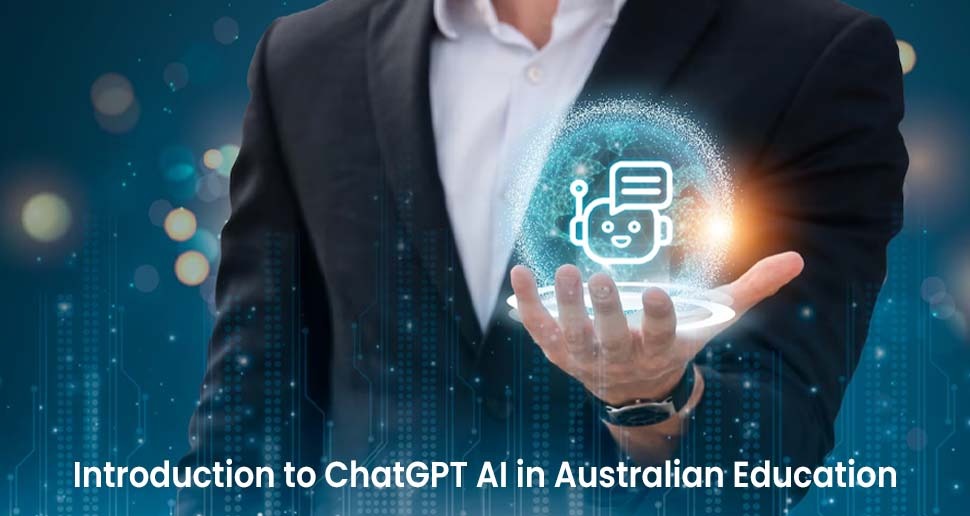Introduction to ChatGPT AI in Australian Education
Artificial intelligence (AI) has grown increasingly common in the Australian education system in recent years. ChatGPT is one of the most popular AI tools for students. Technology now plays an important role in schooling. Universities in Australia are swiftly adjusting to the use of AI in teaching, learning, and research. Universities use a variety of techniques to promote student learning, respond to individual requirements, and improve knowledge access, retention, and application. Another technology that can be used to attain these results is generative AI. Generative AI is both a research stream and a technological advancement with the potential to impact research activity across all disciplines.
Benefits of ChatGPT AI in Australian Digital Learning
Among the most significant ramifications of ChatGPT are:
- Providing a better learning experience
ChatGPT enhances the learning experience for students and educators by providing customised and interactive help. ChatGPT has used natural language processing to engage in meaningful conversations, answer inquiries, and provide explanations on a variety of topics. It serves as a virtual tutor, allowing students to have more personalised learning experiences.
- Support personalised learning in previously unimaginable ways.
ChatGPT, unlike human teachers, can connect with learners individually, providing them with a customised learning experience tailored to their needs and interests.
- Give learners immediate feedback, which is necessary for optimal learning.
ChatGPT can immediately detect areas where students are suffering and provide further assistance to help them overcome these obstacles. This instant feedback might assist learners in remaining motivated and engaged in their learning path.
- Assist in reducing the workload of teachers and educators.
This would free them their time to focus on other vital responsibilities like lesson planning, grading, and providing extra support to students who may require more personalised attention.
Applications of ChatGPT AI in Australian Digital Learning
ChatGPT has several potential uses in education, particularly in online and remote learning. Here are some specific ChatGPT applications in education:
Teacher and instructor assistance: Teachers and instructors can use ChatGPT to generate automated instructional content. Teachers and instructors can use it to easily generate lectures, study materials, and automated quizzes. This saves teachers and instructors time and effort.
ChatGPT can be used to generate automated quizzes and multiple-choice questions, which can help to improve learning results. ChatGPT-generated questions can assist students enhance their learning outcomes by improving their capacity to connect and stimulate information.
Support for research and essay writing: ChatGPT can assist students and learners in generating high-quality essays and reports.
ChatGPT can help students and learners interact with online learning systems by automatically replying to queries and exercises. ChatGPT can also generate automatic dialogues between students and teachers, improving interaction and learning effectiveness.
English language skill development: ChatGPT can be used to help students improve their English language skills. Through activities and automated discussions, it can help learners grow their vocabulary and improve their pronunciation.
Challenges and Considerations in Implementing ChatGPT
Even though ChatGPT is a wonderful teaching tool, it is vital to recognise its limits and use it in conjunction with other resources and tools to give a thorough and well-rounded learning experience.
- Security and privacy
ChatGPT can gather and store user data. This poses privacy and security concerns. ChatGPT should adhere to ethical and legal data gathering and storage norms. And ChatGPT should inform the user about the data being gathered and how it is being used.
- Accuracy
ChatGPT may also deliver false or insufficient information, leading to misunderstanding or confusion on the part of both teachers and pupils.
- Potential Bias
ChatGPT, like any other AI technology, may copy biases from the data on which it was trained. This results in biassed content that has a negative influence on both teaching and learning. The developer should guarantee that the model has been trained with a variety of data sets and that it can actively reduce biases.
- Cost of Implementation
Many schools may not have the funds to install ChatGPT to help students. ChatGPT education can be expensive
Future Possibilities and Trends in ChatGPT
ChatGPT has already earned a name for itself in the realm of natural language processing by allowing people to connect with robots in a more human-like manner. But what is the future of this game-changing technology?
While ChatGPT’s current capabilities are astounding, it has a long way to go before it can completely reproduce human-like discussions. However, with ongoing advances in natural language processing and machine learning, ChatGPT has the potential to increase its skills and broaden its uses in the future.
The Future of ChatGPT AI In Australian Digital Learning
The future of ChatGPT in Australian digital learning will be determined by how it is integrated into the existing education structure, meeting specific regional and cultural needs while maintaining high quality, ethical, and inclusivity standards. Collaboration among educators, policymakers, and technologists will be essential in crafting this future.
Conclusion
Overall, ChatGPT has the potential to revolutionise education. ChatGPT could help to improve student outcomes and create a more interesting and effective educational experience by delivering a personalised and interactive learning experience. As technology advances, we should anticipate to see even more creative applications of ChatGPT in the field of education.





